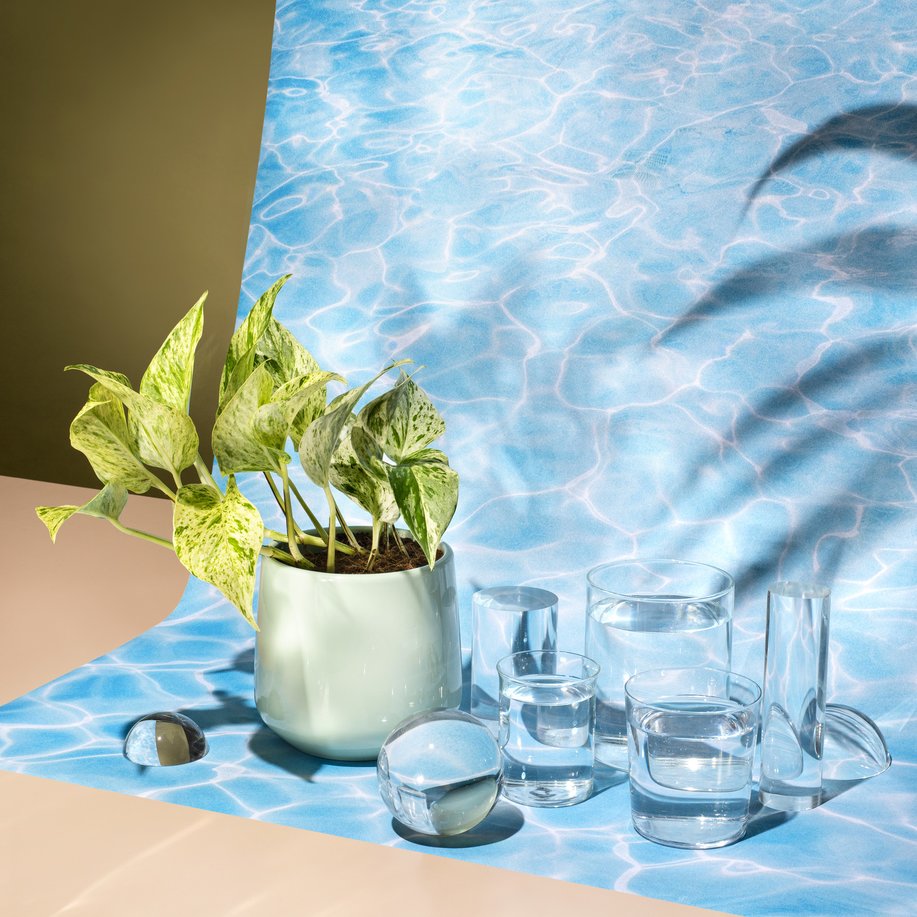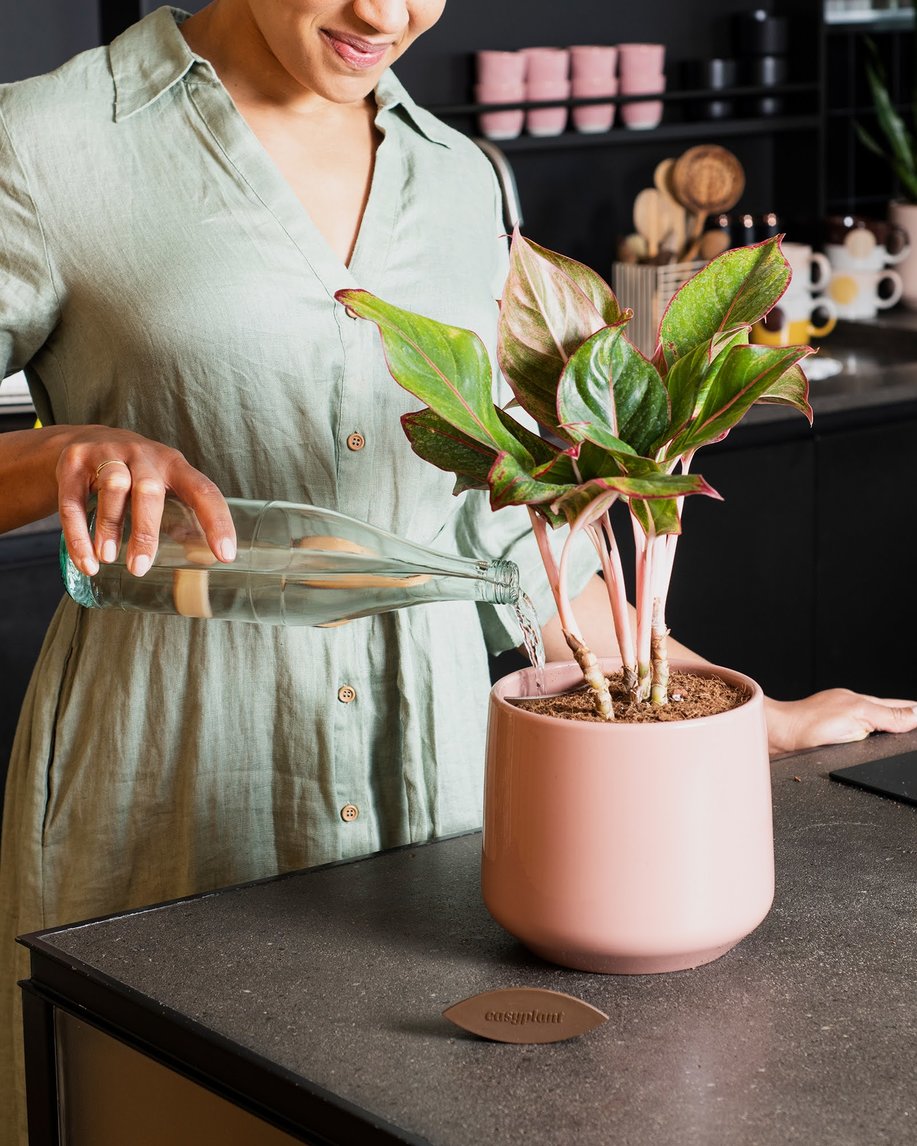How to Water Plants Correctly
Proper watering is a key ingredient to your plant's health and longevity. A common mistake plant owners make is overwatering their houseplants, resulting in their untimely demise. Learning how to water plants effectively includes factors like the amount of water, timing, pot drainage, and more. Keep reading to find out the best way to water plants and an effective tool that can help make proper watering a no-brainer.
1. Water the roots
Many plant owners may not know there is a proper way to water their plants. Focus the spout of your watering can on the soil, not other parts of the plant, like the stem or the leaves. Be sure to thoroughly water the plant's root ball, bearing in mind that the roots are likely just as wide as the plant and one to two feet deep. With easyplant's no-fuss design, the water from the water reservoir gets directly to the roots. This way of watering helps to prevent issues like fungal and bacterial infections.
2. When You Water Your Plant Matters
Timing is an integral factor in knowing how to water plants correctly. For example, many plants stall their growth and conserve their energy by going dormant in the winter. Therefore, they don't need as much watering as they would during their growing season in the summer. Additionally, the best time to water your plant is in the early morning, so if the leaves get wet during watering, they have time to dry prior to being exposed to harsh direct sunlight, which may cause brown spots on the leaves. Dry leaves greatly reduce the risk of plant diseases. If you can't water your plants in the morning, the evening is the next best time. Easyplant will ensure your plant will get watered when needed, with no risk to plant leaves, and you only have to fill the reservoir once a month.
3. Examine Your Soil
Many environmental elements contribute to how quickly your plant dries between waterings. Sticking to a strict watering schedule without examining the soil could lead to overwatering. Every plant is different; some may dry out quicker than others, so always check the soil. If the surface soil is dry, check a few inches down to see if that is dry as well. If so, watering is a go; if not, wait a day or two and check again. The easyplant system allows a less frequent watering cycle while regulating the amount of water your plant needs, so you only have to check it once a month.

4. Check how to water your specific plant
Each plant you own is unique, with unique needs. Before watering, it's critical to learn your plant and its language so you know how to navigate its needs, properly reading all the signs. A ZZ plant only needs to be watered every 2-3 weeks, while a Lucky Bamboo needs water every week. Some plants, like the Bird's Nest Fern, like their soil to be moist, while others prefer to dry out before watering again. Luckily, with easyplant, there is a one size fits all option for how to water your plants. No need to keep track of every plant's watering schedule.
5. Water evenly
Where you water your plant will determine how its roots and leaves grow. If you water on one side only, the roots and leaves will grow towards that side. So, if you want your plant to be full and thick, it must be watered evenly all the way around the pot. One way to ensure that your plants are watered evenly is to use a watering can with a long spout or a watering wand attached to your hose. This will allow you to direct the water to the base of the plant, rather than just watering the surface of the soil. it is essential to fully saturate the soil until about 10% of the water drains out of the pot's drainage holes. This ensures that the soil is fully hydrated and all the roots are getting the moisture they need. If your pot doesn't have drainage holes, it is important to be extra cautious to avoid over-watering, which can lead to root rot. In this case, it is best to wait until the top inch of soil is dry before watering again, and always use a well-draining soil mix. When you have many plants in your home, ensuring each plant is watered properly can be challenging. Depending on your number of plants, it can become very time-consuming. Easyplant knows how to water a plant-- from the roots, allowing for even distribution.

6. Consider your plant pot
Plants from retailers come in temporary housing pots called grower pots. Plants can become root bound if kept in a grower's pot for a long term, inhibiting their growth and making it harder to water properly. Plants need pots of the correct size to ensure that the roots and stems are supported, so when selecting a pot for your houseplant, make sure it is of the appropriate size.
To determine the size, you can measure the diameter of the plant's current pot or the size of its root ball and choose a pot that is a few inches wider to allow room for growth. However, ensuring the pot is not too big is also crucial, as this can lead to excessive watering and root rot. A good rule of thumb is to choose a pot no more than 2 inches wider than the current pot or root ball. This will provide enough room for the roots to spread while ensuring proper drainage and moisture levels.
When selecting a pot for your houseplant, you should also consider the drainage holes; a pot with drainage holes will allow excess water to escape, preventing root rot. The material of the pot also matters - there are different options like plastic, ceramic, terracotta, and more. Each material has its own characteristics and benefits. For example, ceramic pots are heavy and retain moisture well, while plastic pots are lightweight and retain less moisture.
Easyplant pots come in different sizes to accommodate any size plant. All you have to do is open the lid, fill the reservoir, and you're done until the reservoir needs to be filled again. The easyplant pot does the rest. It is the easiest way to water your plants.
How to know if you're overwatering your plants
There are telltale signs that your plant will give if it's being overwatered - lack of growth and yellowing or dropping leaves are two common indicators. You can also smell the soil, as an excess of moisture will allow bacteria and fungi to grow, causing an odor. An odor may be present if the roots have begun to rot, as will fungus gnats swarming around your plant and home.
If your plant is wilting and you're unsure if it's due to under or overwatering, just feel the soil. If the soil is wet, you're likely overwatering and should back off from watering until the soil is dry. If it's dry, you may need to increase the watering frequency.
Get your easyplant today!
Going through all these watering steps to ensure your plant is healthy can be challenging and time-consuming. Learning your plant, watering it evenly, checking the soil, and getting only the roots is a lot to take on for one plant, let alone many. More than that, there is always the risk of forgetting a step or interpreting signs incorrectly.
All that worry and headache can be avoided with the easyplant. Checking the reservoir once and month and refilling when empty is the simplest and most efficient path to thriving plants. With various sizes available, you'll be sure to find what you need. Once you have your easyplant pot, you can set it with two easy steps and forget it until the following month.
